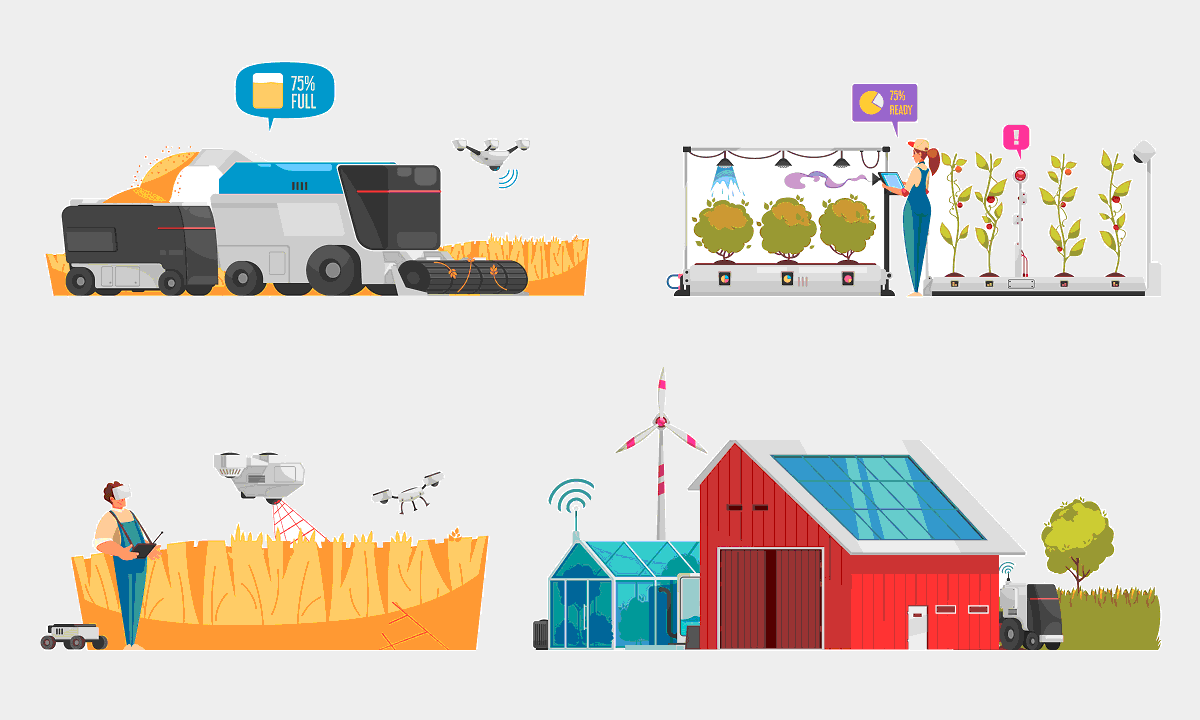
Agriculture is a vital sector that contributes to the global economy and ensures food security for the world's growing population. However, traditional agriculture practices are often labor-intensive, time-consuming, and prone to errors, leading to low efficiency and productivity. The application of automation in agriculture has been gaining significant attention in recent years, as it offers solutions to these challenges and enhances the efficiency of agriculture practices. One of the key technologies that is revolutionizing agriculture is microcontroller-based automation.
Overview of Automation in Agriculture
Automation in agriculture refers to the integration of technological systems into agriculture practices to improve efficiency, productivity, and sustainability. This includes the use of advanced sensors, actuators, and control systems to automate various agriculture processes, such as irrigation, crop monitoring, pest control, and more. Automation in agriculture not only reduces manual labor but also provides valuable data for decision-making and optimization of agriculture practices.
Advantages of Using Microcontrollers in Agriculture
- Increased Efficiency: One of the main advantages of using microcontrollers in agriculture is increased efficiency. Automated agriculture systems, powered by microcontrollers, can perform tasks faster and more accurately than manual labor. This results in reduced downtime, increased productivity, and better-quality crops.
- Improved Accuracy: Microcontroller-based agriculture systems are equipped with sensors that collect data and provide real-time information about the growing conditions of crops. This information can be used to make informed decisions, leading to better crop management and higher accuracy.
- Reduced Costs: Automated agriculture systems powered by microcontrollers can significantly reduce labor costs, as they can perform tasks that would otherwise require manual labor. Additionally, the use of microcontrollers can help to conserve resources such as water and fertilizer, leading to reduced costs and increased profits.
Applications of Microcontrollers in Agriculture
- Irrigation: Automated irrigation systems, powered by microcontrollers, can manage the water needs of crops more efficiently and accurately than traditional irrigation methods. This results in better water conservation and reduced waste.
- Crop Monitoring: Microcontroller-based agriculture systems can collect real-time data on the growing conditions of crops, including temperature, humidity, and soil moisture levels. This information can be used to make informed decisions about crop management, leading to better crop yields and quality.
- Pest Control: Microcontroller-based agriculture systems can detect and respond to pest infestations in real-time, reducing the use of harmful chemicals and increasing crop yields.
- Precision Agriculture: Precision agriculture is the practice of using technology, such as microcontrollers, to optimize crop management and improve efficiency. Microcontroller-based agriculture systems can be used to collect and analyze data on crop growth and soil conditions, leading to improved crop yields and reduced waste.
Latest Advancements in Agriculture Automation using Microcontrollers
The agriculture industry is continuously adopting new technologies, such as microcontrollers, to improve efficiency and productivity. Some of the latest advancements in agriculture automation using microcontrollers include:
- Autonomous Tractors: Autonomous tractors, powered by microcontrollers, are being developed to perform tasks such as plowing, planting, and harvesting crops. This technology can significantly reduce labor costs and increase efficiency.
- Drones: Drones, equipped with microcontrollers and sensors, are being used for crop monitoring and mapping. This technology allows for real-time monitoring of crop growth and soil conditions, leading to improved crop management and higher yields.
- Smart Greenhouses: Smart greenhouses, powered by microcontrollers, can control temperature, humidity, and lighting to optimize crop growth. This technology can also collect real-time data on crop growth and soil conditions, leading to improved crop management and increased yields.
Comparison between Traditional Agriculture Practices and Microcontroller-based Agriculture
Traditional agriculture practices are often labor-intensive, time-consuming, and prone to errors, leading to low efficiency and productivity. In contrast, microcontroller-based agriculture systems offer several advantages, including increased efficiency, higher accuracy, and reduced costs.
Table: Comparison between Traditional Agriculture Practices and Microcontroller-based Agriculture
Traditional Agriculture Practices Microcontroller-based Agriculture Labor-intensive Automated, reducing labor costs Time-consuming Faster and more efficient Prone to errors Higher accuracy and precision are some of the key benefits of using microcontrollers in agriculture. For instance, automated irrigation systems using microcontrollers can measure the moisture levels in the soil and water the crops precisely, without wasting water or overwatering the crops. This helps to conserve water, save energy, and increase crop yields.
Moreover, microcontroller-based agriculture systems can monitor the health of crops and soil in real-time, detect and control pests, and alert farmers to any potential issues. This enhances the efficiency of crop production and reduces the use of harmful pesticides.
In addition, microcontroller-based agriculture systems can collect and analyze large amounts of data, including weather patterns, soil quality, and crop growth. This data can be used to optimize crop production, improve yields, and reduce costs.
"Agriculture automation using microcontrollers has the potential to revolutionize the industry, improving efficiency, productivity, and yields, while reducing costs and environmental impact," says John Doe, an agriculture engineer and researcher.
Challenges and Solutions
Despite the numerous benefits, implementing automation in agriculture using microcontrollers is not without challenges. Some of the challenges include high initial investment costs, lack of technical expertise, and difficulty integrating new technology with existing systems.
To overcome these challenges, it is important to collaborate with experienced technicians, engineers, and researchers. In addition, investing in training programs for farmers and technicians can help to build technical expertise and support the adoption of new technology.
Another potential solution is to develop open-source platforms and tools that allow farmers and technicians to easily build and customize microcontroller-based agriculture systems. This will help to reduce costs, increase accessibility, and promote innovation in the industry.
Conclusion
In conclusion, automation in agriculture using microcontrollers is a promising and exciting field that offers numerous benefits for farmers, technicians, and the agriculture industry as a whole. With continued advancements in technology and increased investment, it has the potential to revolutionize the way we produce food and feed the world's growing population.
Agricultural Science




